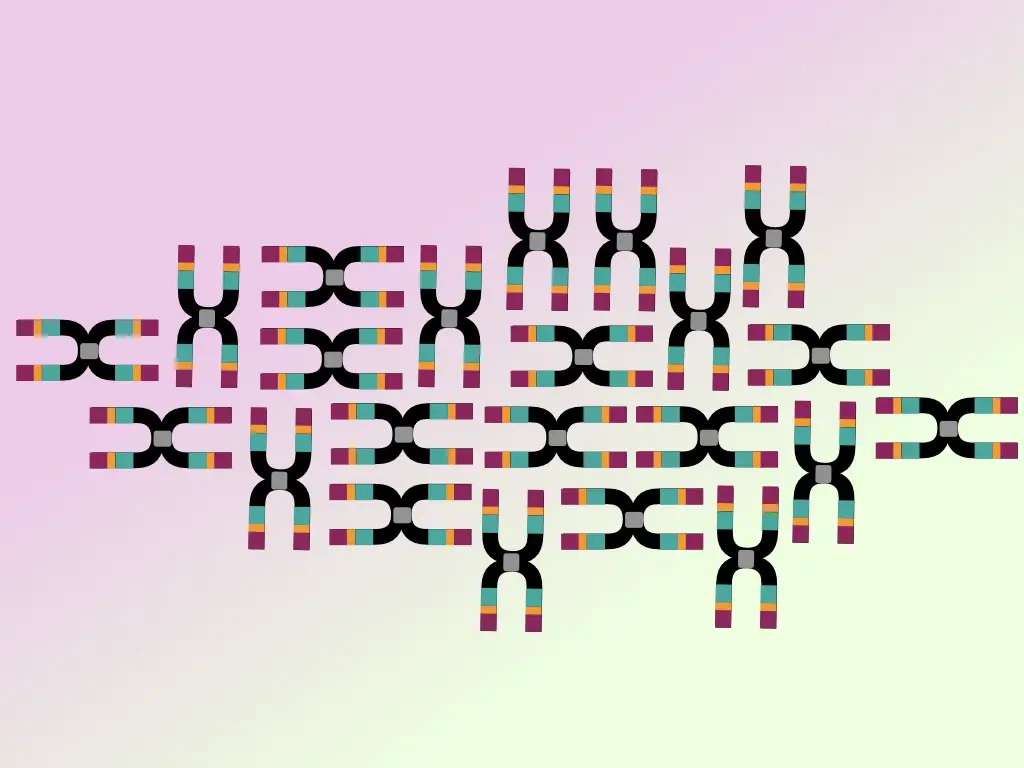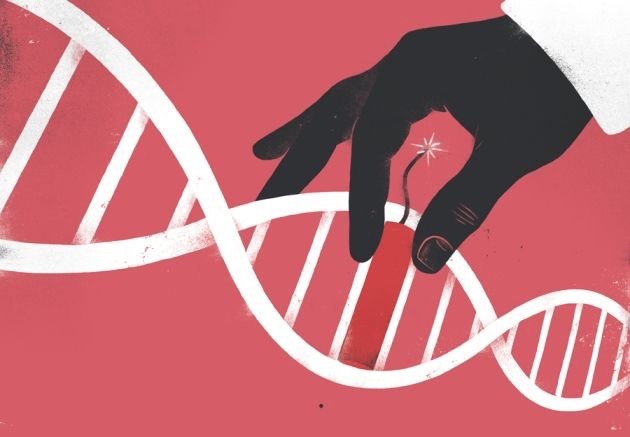“The DNA of prokaryotes and eukaryotes are present on a chromosome but do you know how different it is? Explore some common and crucial differences between prokaryotic vs eukaryotic— DNA, genes, chromosomes and genome.”
All life forms on earth are categorized into prokaryotes and eukaryotes. Prokaryotes are single-cell organisms while eukaryotes are multicell organisms.
Interestingly, both life forms contain nucleic acid (DNA or RNA) as their genetic material. However, DNA is more prevalently present. Nucleic acid or genetic material helps produce and inherit traits.
If we talk about DNA, it’s made up of three constituents– sugar, phosphate and nitrogenous bases and arranged on a chromosome. However, the DNA, genes, chromosome(s) and genome of prokaryotes and eukaryotes have significant differences.
In this article, I will explain to you the differences between prokaryotic and eukaryotic– DNA, genes, chromosomes and genome. In addition, I will also list a few similarities as well.
Stay tuned.
Related article: Prokaryotic Chromosome– Structure, Function and Organization.
Disclaimer: Information provided here is collected from peer-reviewed resources and re-presented in an understandable language. All the sources are enlisted at the end of the article.
Key Topics:
Differences between Prokaryotic DNA vs. Eukaryotic DNA:
Prokaryotes are unicellular organisms having a single cell, for example— bacteria, blue-green algae and archaea. Eukaryotes, on the other side, are multicellular organisms having billions to trillions of cells, for example— animals and plants.
Prokaryotes lack a true cell nucleus and membrane-bounded organelles while eukaryotes do have a cell nucleus and membrane-bounded organelles.
Therefore, the prokaryotic genomic DNA is present in the cell cytoplasm (in the structure known as nucleoid) while the eukaryotic genomic DNA is present in the cell nucleus. Note that both organisms possess extrachromosomal DNA as well.
Extrachromosomal DNA in prokaryotes is present in the structure called ‘plasmid’ while extrachromosomal DNA in eukaryotes is present in membrane-bounded organelles such as mitochondria or chloroplast.
Note that plasmid DNA is even a smaller, circular and double-stranded bacterial DNA.
Prokaryotic chromosome vs eukaryotic chromosome:
Prokaryotes and eukaryotes both contain a true chromosome, however, the prokaryotic chromosome is either circular or linear while the eukaryotic chromosome is linear.
Prokaryotes possess a single chromosome while eukaryotes possess different numbers of chromosomes.
Usually, prokaryotes are haploid and contain only a single chromosome but some organisms do contain many copies of a single chromosome, for example, B. burgdorferi has 11 copies of a circular chromosome. Conversely, the somatic cells of eukaryotes contain diploid chromosomes (2n).
The circular chromosome of prokaryotes is a covalently closed circular chromosome. Meaning, it’s attached end-to-end. On the other hand, the linear chromosomes of eukaryotes aren’t end-to-end joined.
The multicellular eukaryotic chromosome has a centromere, telomere and arms parts. Unicellular prokaryotes lack such a partition.
A higher level of DNA packaging is present in both organisms with significant differences.
Prokaryotes lack true histone proteins, unlike the eukaryotic chromosomes. The complex interaction between DNA and histones prepares a chromosomal structure in eukaryotes.
Instead, a prokaryotic chromosome contains proteins like histone-like proteins (HU), Histone-like nucleoid structuring proteins, other NAP (nucleoid-associated proteins) and Integration host factor– IHF. Conversely, eukaryotic chromosomes contain proteins like HA, H2A, H2B, H3, and H4.
The circular chromosome organizes into loops and supercoils while the linear eukaryotic chromosome is organized into chromatin, nucleosomes, 30 nm fiber, chromatid and chromosome.
The detailed process of eukaryotic packaging is explained in this article: DNA Packaging in Eukaryotes.
Prokaryotic Genes vs Eukaryotic Genes:
Prokaryotes have a single copy of a functional gene while eukaryotes have two copies of a function gene on two different chromosomes in a somatic cell.
Thus, prokaryotes lack heterozygosity due to the presence of only a single chromosome, while eukaryotes have a heterozygous condition due to the presence of chromosome pairs.
The ideal structure of a gene is regulatory elements — promotes — exon — intron. Interestingly, a prokaryotic gene only carries exons (coding sequences) in a gene. They lack introns. While an eukaryotic gene carries both exons and introns.
The mRNA transcript formed in prokaryotes is polycistronic while the mRNA transcript formed in the eukaryotes is monocistronic.
One crucial difference between prokaryotic genes and eukaryotic genes is the regulation of gene expression. Prokaryotes follow operons for the regulation of gene expression while eukaryotes don’t have such a system.
In the operons, clusters of similar genes are co-regulated and expressed using a single promoter. It helps bacteria to adapt to the rapidly changing surroundings and environment.
Contrary, in eukaryotes, for every single gene, a dedicated promoter sequence is present in the genome.
Thus, due to the lack of introns and the presence of a co-regulation mechanism, prokaryotic genes are relatively shorter in size than eukaryotic genes, hypothetically.
As per Vellai and Vida, 1999, the average size of a prokaryotic gene and a eukaryotic gene is 950 bp and 2500 bp, respectively.
In addition, prokaryotes follow a horizontal gene transfer mechanism to transmit their genes, while eukaryotes lack horizontal gene transfer.
Studies suggest that both organisms possess a substantial amount of overlap genes. As the name suggests, overlapping genes share their sequences with the adjacent DNA or gene.
However, gene overlapping in prokaryotes is unidirectional (occurs on the same strand) while gene overlapping in eukaryotes is bidirectional (occurs in two opposite or antiparallel strands).
Prokaryotes contain very few redundant genes while eukaryotes contain a substantial number of redundant genes.
Prokaryotic Genome vs Eukaryotic Genome:
One major and clear difference between the prokaryotic genome and the eukaryotic genome is that the prokaryotic genome is very small in size than the eukaryotic genome.
Irrespective of that, a very small part of the prokaryotic genome, approximately 12% is non-coding. Whereas, as we all know the major part of the eukaryotic genome, approximately 97 to 98% is junk and non-coding DNA.
The prokaryotic genome thus has around 98% protein-coding genes while the eukaryotic genome has only 2 to 3% of protein-coding genes.
The highest number of genes present in prokaryotes is ~3100 in E.coli while only the human genome contains 20,000 to 25,000 protein-coding genes.
No of Genes and Genome Size in Prokaryotes:
| Prokaryote | No of Genes | Genome size |
| E. coli K12 | 4400 | 4.64 MB |
| M.tuberculosis | 4000 | 4.41 MB |
| A.fulgidus (Archaea) | 2500 | 2.18 MB |
No of Genes and Genome Size in Prokaryotes:
| Eukaryotes | No of Genes | Genome size |
| H.sapiens | 20 to 25,000 | 3200 MB |
| A.thaliana | 25,500 | 125 MB |
| D.melanogaster | 13,600 | 180 MB |
The prokaryotic genome usually contains less and short repetitive DNA while the large portion of the eukaryotic genome is highly repetitive and are categorized into microsatellite and minisatellites.
Irrespective of their smaller genome size, prokaryotes do have a higher amount of active transposable elements. However, transposons are majorly inactive in eukaryotes.
Note that transposons play a crucial role in providing genetic diversity. It can jump from one to another location in the genome and produce various combinations of alleles.
Other differences:
Replication, transcription and translation, all three activities, occur in cell cytoplasm in prokaryotes while in eukaryotes, replication and transcription occur in the nucleus while translation occurs in the cytoplasm.
The circular prokaryotic chromosome contains only a single ‘origin of replication’ while the eukaryotic chromosome contains multiple ‘origin of replication.’ Note that ‘OriC’ or ‘origin of replication’ is a site from where the replication process initiates.
In addition, the single-cell primate contains two replication forks while eukaryotic replication contains multiple replication forks as there are many replication origins.
The prokaryotic replication process is simple while the replication process in eukaryotes is complex.
The prokaryotic replication rate is 1000 nucleotides/ second while the eukaryotic replication rate is 100 nucleotides/ second. Thus, prokaryotic replication is a much more rapid process compared with eukaryotic replication.
Similarities between Prokaryotic vs Eukaryotic DNA:
Despite the differences we have discussed so far, there are several similarities between prokaryotic and eukaryotic DNA as well.
The constituents of DNA in both are sugar, phosphate and nitrogenous bases. Furthermore, DNA in both follows Chargaff’s rule for base-pairing; two hydrogen bonds between A and T and three hydrogen bonds between G and C are present.
Both, contain DNA as their genetic material and is located on chromosome(s).
Both contain coding and non-coding DNA sequences in their genome.
Replication, transcription and translation occur in both. In addition, mRNA is the primary transcript produced during transcription.
The translation process for prokaryotic and eukaryotic DNA occurs in the cytoplasm at the ribosome.
Prokaryotes and eukaryotes both contain extrachromosomal DNA as plasmid and organelle DNA, respectively.
Wrapping up:
Nucleic acid is a vital requirement for any cell on earth because it can store, transfer and express genetic information. As we discussed, both unicellular and multicellular organisms possess DNA but have substantial differences.
In conclusion, the structure, function and location of prokaryotic and eukaryotic DNA are similar, although, use different mechanisms to process the information and perform various activities.
I hope you like this interesting piece of information. Share this article and read related content on our blog.
Sources:
Vellai T, Vida G. The origin of eukaryotes: the difference between prokaryotic and eukaryotic cells. Proc Biol Sci. 1999 Aug 7;266(1428):1571-7. doi: 10.1098/rspb.1999.0817. PMID: 10467746; PMCID: PMC1690172.
Kuzminov A. The precarious prokaryotic chromosome. J Bacteriol. 2014 May;196(10):1793-806. doi: 10.1128/JB.00022-14. Epub 2014 Mar 14. PMID: 24633873; PMCID: PMC4011006.
Brown TA. Genomes. 2nd edition. Oxford: Wiley-Liss; 2002. Chapter 2, Genome Anatomies. Available from: https://www.ncbi.nlm.nih.gov/books/NBK21120/.
Subscribe to our weekly newsletter for the latest blogs, articles and updates, and never miss the latest product or an exclusive offer.



